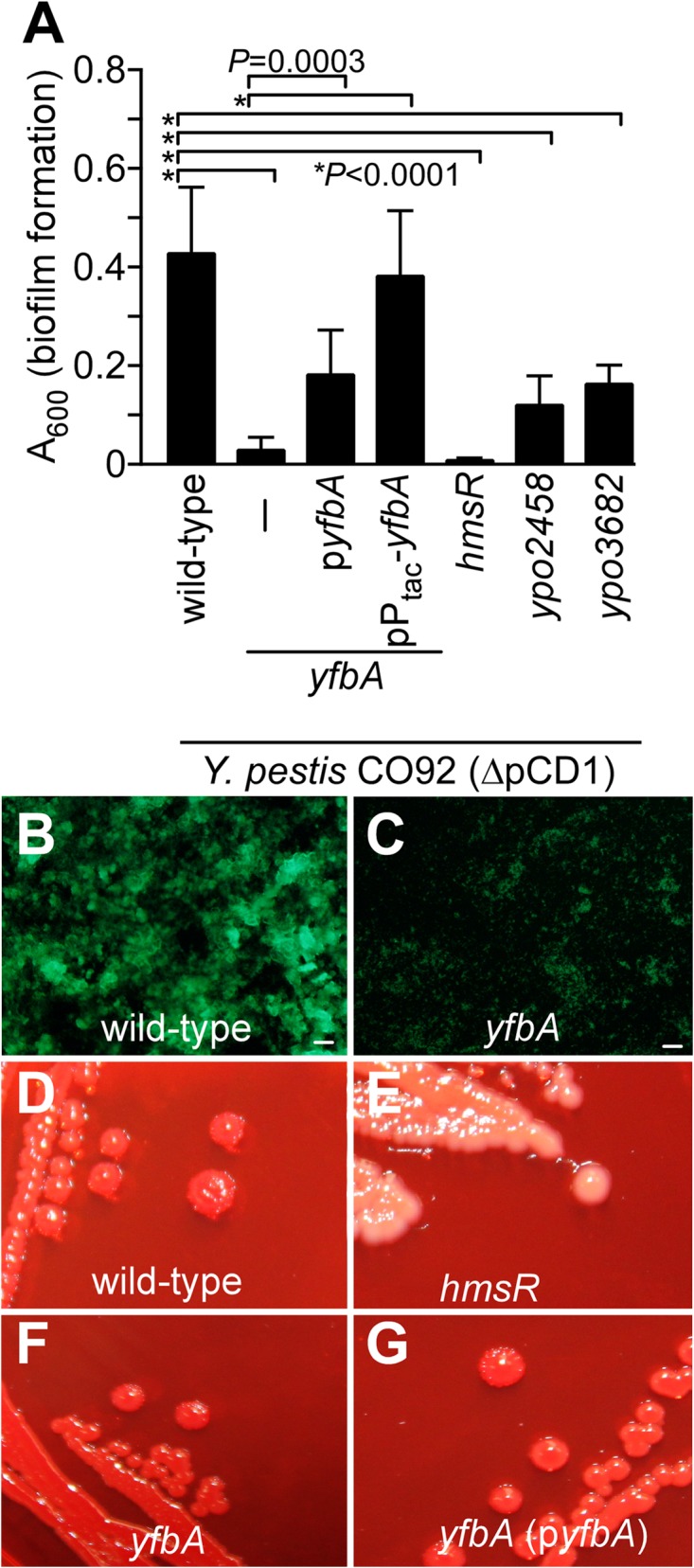FIG 4.

Three LysR-type transcriptional regulators contribute to Y. pestis in vitro biofilm formation. (A) A library of Y. pestis CO92(ΔpCD1) mutants with mini-Tn5 insertional lesions was screened for in vitro biofilm defects by incubating static cultures for 24 h at 26°C and crystal violet staining. This approach identified variants with insertions in ypo2150 (yfbA), ypo2458, and ypo3682, each of which encodes an LTTR. As a control, a Y. pestis mutant with an insertional lesion in hmsR was also defective for biofilm formation and plasmids pyfbA (yfbA under the control of its native promoter) and pPtac-yfbA (yfbA under the control of the IPTG-inducible Ptac promoter) increased biofilm formation of the yfbA mutant. The data represent the means and standard errors of the mean from 10 independent experimental determinations. (B and C) Biofilm cultures of wild-type Y. pestis CO92(ΔpCD1) (B) and its yfbA mutant (C) were stained with Syto9, and fluorescence microcopy images were acquired (bars, 20 μm). (D and E) A Congo Red agar plate was inoculated with Y. pestis strains and incubated at 26°C for 48 h. The microscopy images reveal the PNAG (hms)-dependent Congo Red pigmentation phenotype of wild-type Y. pestis CO92(ΔpCD1) (D) compared to the nonpigmented staining phenotype of the hmsR mutant (E). (F and G) Y. pestis CO92(ΔpCD1) yfbA (F) and yfbA(pyfbA) (G) strains form pigmented colonies on Congo Red agar plates.
